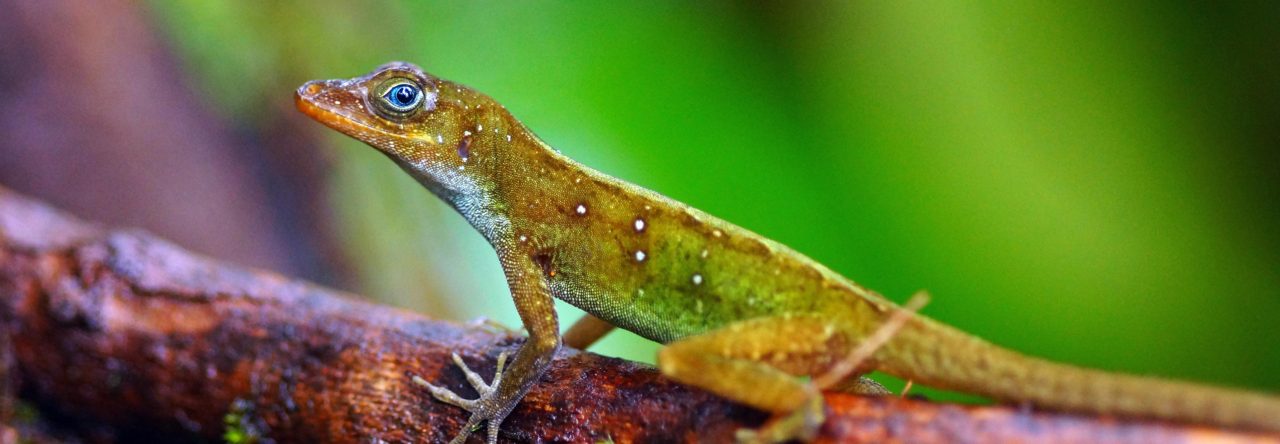Sondra Vega, a graduate student at the University of Puerto Rico, writes:

A green anole eating a piece of fruit that fell from a bird feeder. Photo from http://4.bp.blogspot.com/_I_xaKqQzxyY/R4g96myXR_I/
In lizards, omnivory/frugivory is considered unusual and particular of some species; even though dietary studies indicate that many species add plant products to their diet. In spite of the fact that seeds and fruits have been reported in stomach content or fecal pellets of Anolis, their importance and contribution to the diet of these lizards is still unknown. At present, the general consensus is to categorize Anolis as strict insectivores. Therefore the extent by which omnivory/frugivory plays a role in the Anolis diet still needs to be assessed.
My research aims to determine how the variations in food abundance in two forests at the northern limestone region of Puerto Rico affect the degree of omnivory/frugivory and trophic position of Anolis lizards. I am using stable isotope technology to analyze the omnivory/frugivory and trophic position of the Anolis lizard as well to quantify the importance of fruits to the diet of the omnivorous Anolis species. Stable isotopes are a novel technique that has the potential to elucidate diets, capture interactions such as trophic omnivory, and track energy or mass flow through ecological communities. The information will help to better comprehend the functional role of Anolis lizards in the dynamic and structure of food webs and in ecosystem function, as well as the dynamics of vegetation in tropical forests. Although this project is focused on anole lizard species of Puerto Rico, the findings are of relevance for understanding of islands where lizards are also a dominant component of ecosystems.
- Evolution in Real Time on Lizard Island - March 23, 2025
- Spider Snags Adult Anolis osa - March 22, 2025
- An Homage to the Green Anoles of New Orleans - March 21, 2025


Skip (James) Lazell
On Guana Island, BVI, all three Anolis are facultative frugivores: A. pulchellus rarely, A. cristatellus regularly, and A. stratulus constantly. The variation may have more to do with the position of the hotel bird-feeder — hung on a big branch just off the tree trunk about 2 m high — than with the dietary preferences of the anoles.